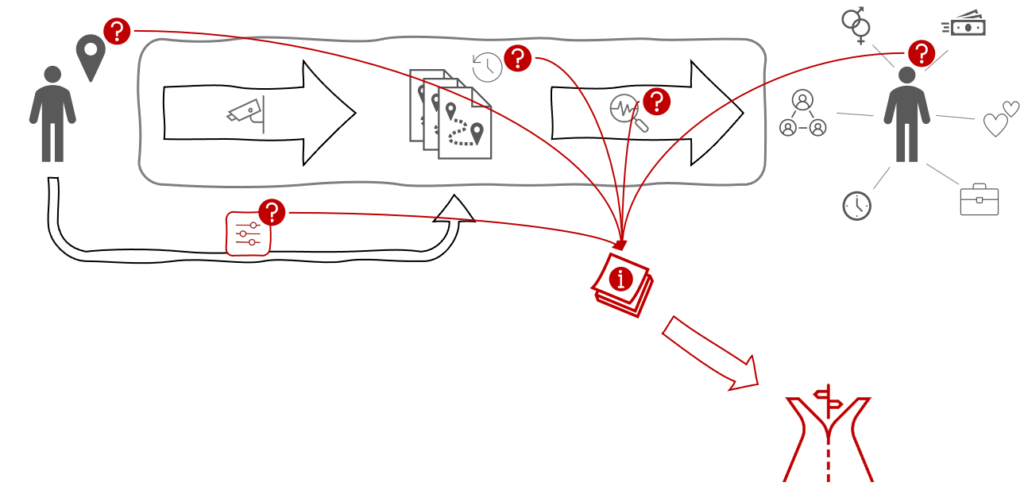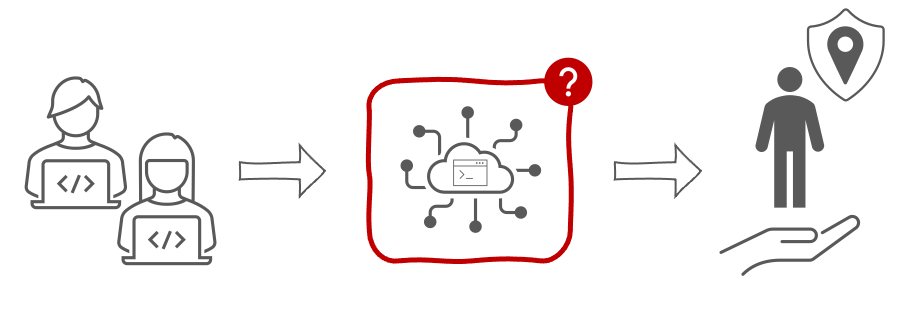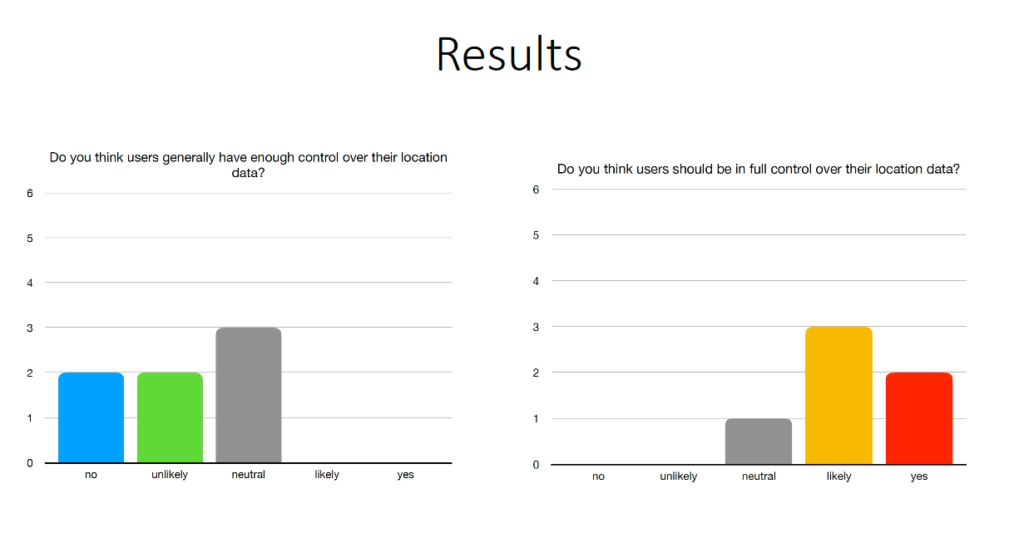Location data is potentially highly sensitive information that allows deep conclusions to be drawn about individuals – which is why we are looking for different ways to strengthen people’s digital sovereignty with regard to location data as part of the SIMPORT project. At the end of May, we already conducted user workshops to identify the needs of app users with regard to the collection and processing of location-related and personal data, as well as their wishes for greater privacy of their location information.
Following on from this, the development of software solutions around location privacy was the focus of a developer workshop on 30th of June. In an active exchange with people involved in the development of location-based services, we were able to gather concrete opinions, ideas and criticism on a planned privacy toolkit. The eight participants were mostly developers, but also founders and young entrepreneurs who are involved in location-based services in their daily work.

The toolkit should enable users to independently manage the retrieval of location data – e.g., with time restrictions or automatically generated inaccuracies of their own coordinates. This should give users sovereign control over their own location data and enable them to make informed decisions about which location data is shared when and how with which location-based apps.

An open discussion on current practices of location privacy and informed consent was followed by group discussions on the following topics:
- Central management logic with standardized control mechanics
Here, the participants discussed which functions should be available to users in order to keep full control over their own position data. They also considered how such functions could be implemented in the planned data protection toolkit. - Standardized user interface to enable consistent user control
There was an exchange about which user interface (UI) elements should be available in a data protection toolkit. The questions arose as to which visual and functional customisation options are permitted and whether the elements should also be customisable for developers. - Intuitive and transparent access to background information
The background information to be displayed to users was considered. The focus was on the user experience and how much text and information would overwhelm the users or even be perceived as annoying.
In a final round, the results of the group work were presented in detail and discussed in depth.
Conclusion
We received many very exciting insights and ideas from the participants on the topic of location privacy. From the developers’ point of view, the planned privacy toolkit is important for raising awareness of privacy issues in society. It has the potential to contribute to a better understanding of how apps work, which could make users feel more positive about using apps. It may also promote transparency and trust, which could bring sceptics on board. Finally, participants generally recognise the need for user control when it comes to their own location data – this is also illustrated by the results of a survey conducted during the workshop below.
Critical voices were also heard: For example, from the point of view of the participants, the toolkit could mean considerable effort for both users and developers. One fear of the participants is that the companies behind the smartphone operating systems iOS and Android are already planning comparable features for the future, which could possibly make the toolkit obsolete. Furthermore, it is a great challenge to develop such a versatile toolkit that works for very diverse platforms.

Outlook
The findings provide a valuable foundation to approach the development of the implied privacy toolkit in further steps. Based on the findings, we will begin the concrete planning and development of the software during the course of the project. In addition, we will investigate to what extent the results from the user and developer workshops can be linked.
